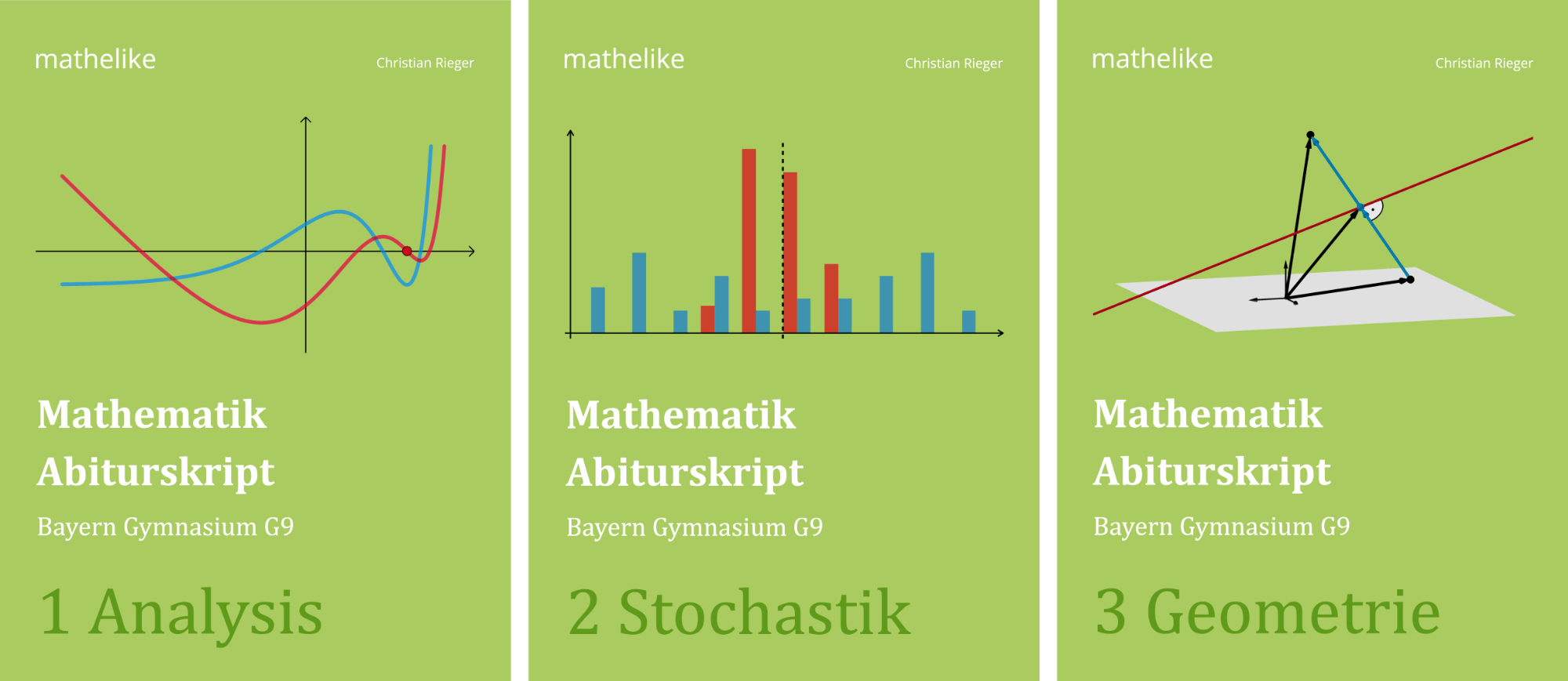Betrachtet wird die Schar der in \(\mathbb R\) definierten Funktionen \(h_k\) mit \(h_k(x) = (x - 3)^k + 1\) und \(k \in \{1;2;3;\dots\}\).
Geben Sie in Abhängigkeit von \(k\) das Verhalten von \(h_k\) für \(x \to -\infty\) an und begründen Sie Ihre Angabe.
(3 BE)
Lösung zu Teilaufgabe 2a
\[h_k(x) = (x - 3)^k + 1; \;D_{h_k} = \mathbb R, \; k \in \{1;2;3;\dots\}\]
\(\lim \limits_{x\,\to\,-\infty} h_k(x) = -\infty\) für ungerade Werte von \(k\)
\(\lim \limits_{x\,\to\,-\infty} h_k(x) = +\infty\) für gerade Werte von \(k\)
Begründung
Für jeden Wert von \(k\) ist \(h_k\) eine ganzrationale Funktion \(k\)-ten Grades. Dabei ist \(x^k\) der Summand mit der höchsten vorkommenden Potenz, welcher das Verhalten für \(x \to -\infty\) bestimmt.
\[\lim \limits_{x\,\to\,-\infty}h_k(x) = \lim \limits_{x\,\to\,-\infty}x^k = \begin{cases} -\infty\;\text{für ungerade Werte von}\;k \\[0.8em] +\infty\;\text{für gerade Werte von}\;k \end{cases}\]
Anmerkung
Bei einer ganzrationalen Funktion \(f\colon x \mapsto \textcolor{#cc071e}{a_{n}}\textcolor{#0087c1}{x^{n}} + a_{n-1}x^{n-1} + \textstyle{\dots} + a_{1}x + a_{0}\) bestimmt immer der Summand mit der höchsten vorkommenden Potenz \(\textcolor{#0087c1}{x^n}\) zusammen mit dem Leitkoeffizienten \(\textcolor{#cc071e}{a_n}\) das Verhalten der Funktion für \(x \to -\infty\) bzw. \(x \to +\infty\).
\[\lim \limits_{x \,\to\,-\infty} (\textcolor{#cc071e}{a_{n}}\textcolor{#0087c1}{x^{n}} + a_{n-1}x^{n-1} + \textstyle{\dots} + a_{1}x + a_{0}) = \lim \limits_{x\,\to\,-\infty} \textcolor{#cc071e}{a_{n}}\textcolor{#0087c1}{x^{n}}\]
bzw.
\[\lim \limits_{x \,\to\,+\infty} (\textcolor{#cc071e}{a_{n}}\textcolor{#0087c1}{x^{n}} + a_{n-1}x^{n-1} + \textstyle{\dots} + a_{1}x + a_{0}) = \lim \limits_{x\,\to\,+\infty} \textcolor{#cc071e}{a_{n}}\textcolor{#0087c1}{x^{n}}\]


